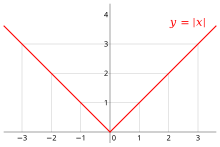Nope, a human observation and copy of a natural process.
Certainly. Measurement is a human invention.
From observation of natural geometry.
Nope, a human observation and copy of a natural process.
Yes. You do that a lot - when you talk about things like "natural values" - a single example of which you have yet to demonstrate - let alone show how it would make the slightest difference if it were true.
If you don't take the time to peruse the examples I provide, I cannot accommodate your whims.
When you look at a flower, you are observing several deterministic values which define the pattern.
A
fractal is a pattern that the laws of
nature repeat at different scales. Examples are everywhere in the forest. Trees are
natural fractals, patterns that repeat smaller and smaller copies of themselves to create the biodiversity of a forest.Nov 4, 2018
Its mathematical value can be expressed by the Fibonacci Sequence ( a universal exponential function).
You just don't recognize a
"value" when you observe it. You need to try a little harder to understand the fundamental principle on which the term
"value" is founded.
Absolute values,
In
mathematics, the
absolute value or
modulus |
x|
of a real number x is the non-negative value of x without regard to its sign. Namely, |
x| =
x for a
positive x, |
x| = −
x for a
negative x (in which case −
x is positive), and |0| = 0.
For example, the absolute value of 3 is 3, and the absolute value of −3 is also 3.
The absolute value of a number may be thought of as its distance from zero.
Generalisations of the absolute value for real numbers occur in a wide variety of mathematical settings. For example, an absolute value is also defined for the complex numbers, the quaternions, ordered rings, fields and vector spaces.
The absolute value is closely related to the notions of magnitude, distance, and norm in various mathematical and physical contexts.
The
graph of the absolute value function for real numbers
https://en.wikipedia.org/wiki/Absolute_value
Relative values are abstractions of extant absolute values.







